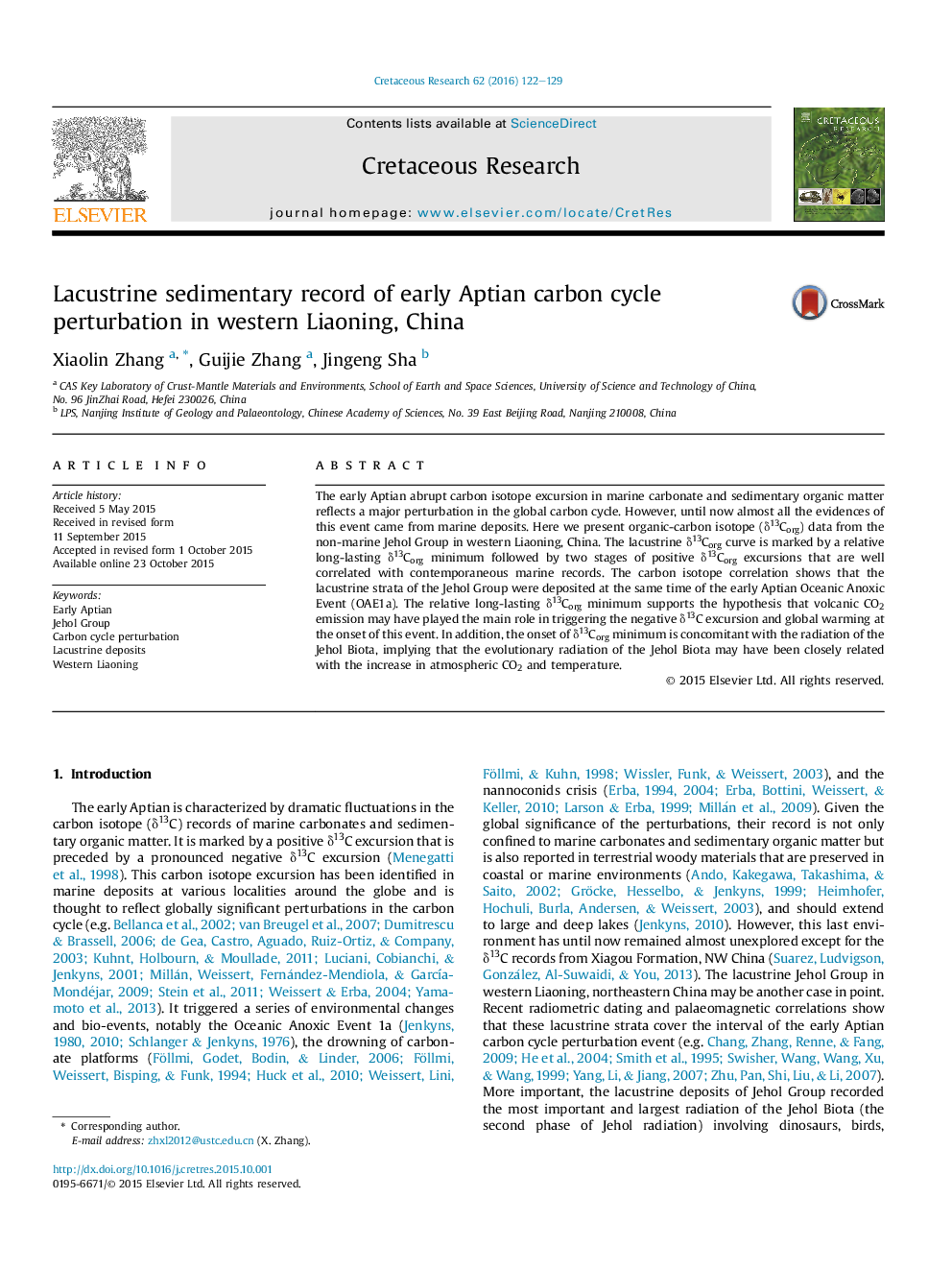| Article ID | Journal | Published Year | Pages | File Type |
|---|---|---|---|---|
| 4746647 | Cretaceous Research | 2016 | 8 Pages |
•We get the organic-carbon isotope curve of nonmarine Jehol Group in western Liaoning.•The δ13Corg curve can be correlated well with the early Aptian marine records.•The δ13Corg variation is controlled by the global carbon cycle perturbation.•The volcanic CO2emissionmay be the main reason of the carbon cycle perturbation.•The carbon cycle perturbation may induced the radiation of the Jehol Biota.
The early Aptian abrupt carbon isotope excursion in marine carbonate and sedimentary organic matter reflects a major perturbation in the global carbon cycle. However, until now almost all the evidences of this event came from marine deposits. Here we present organic-carbon isotope (δ13Corg) data from the non-marine Jehol Group in western Liaoning, China. The lacustrine δ13Corg curve is marked by a relative long-lasting δ13Corg minimum followed by two stages of positive δ13Corg excursions that are well correlated with contemporaneous marine records. The carbon isotope correlation shows that the lacustrine strata of the Jehol Group were deposited at the same time of the early Aptian Oceanic Anoxic Event (OAE1a). The relative long-lasting δ13Corg minimum supports the hypothesis that volcanic CO2 emission may have played the main role in triggering the negative δ13C excursion and global warming at the onset of this event. In addition, the onset of δ13Corg minimum is concomitant with the radiation of the Jehol Biota, implying that the evolutionary radiation of the Jehol Biota may have been closely related with the increase in atmospheric CO2 and temperature.
